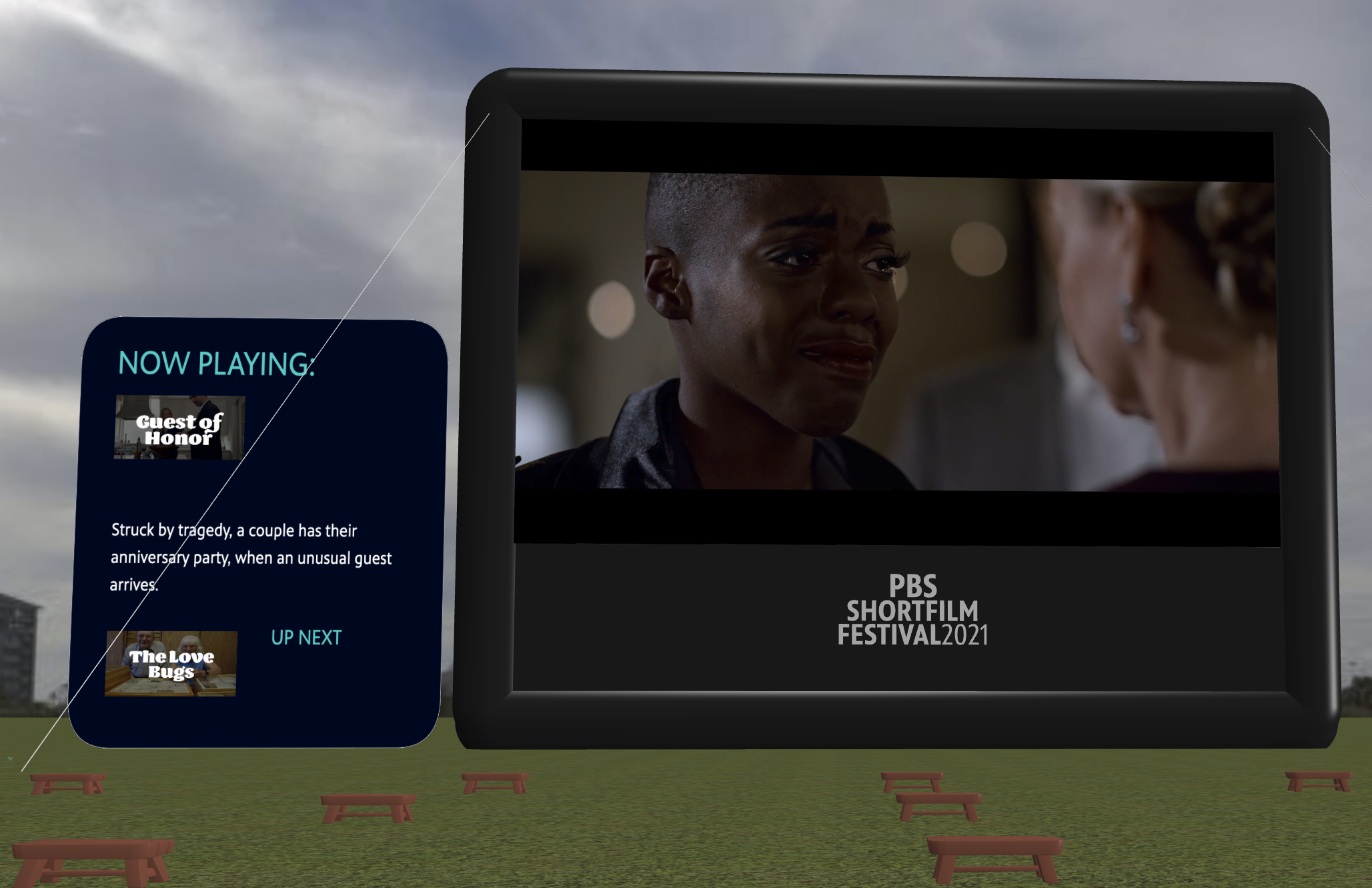
ARLINGTON COUNTY, Va.—PBS has added a virtual twist to its 10th Annual Short Film Festival, enabling audiences to view curated stories by independent filmmakers via the immersive WebXR beta experience “Screen on the Green.”
The festival, running from July 12 to Aug. 31, added the new virtual reality dimension to this year’s event in response to the continued reluctance many people feel about attending large gatherings even as pandemic restrictions begin to ease. Prior to 2020 when many large gatherings and events ceased due to the pandemic, the PBS Annual Short Film Festival was an in-person event held in Washington, D.C.
With the help of VR and leveraging several Amazon Web Services (AWS resources), the PBS Innovation Team has recreated the theater experience so audiences of up to 300 at a time can view all 25 films, which play consecutively, on a large, outdoor cinema screen at the center of two different virtual environments—a daytime space with cityscape views and a moonlit outdoor landscape. “Screen on the Green” gives the filmmakers a new platform to reach a wider audience.
Viewers can access the VR experience with compatible headsets, including the Oculus Quest, or via a web browser, AWS said.
“Filmmaking is an art form that’s hard to recreate in a linear format. Rather than broadcast the films, or stream them via a social platform, we wanted to transport audiences to the cinema,” said Mikey Centrella, director of product management on the PBS Digital Innovation Team.
“The pandemic provided a unique opportunity for us to test a VR format for the festival, especially as remote work has helped audiences become more comfortable with being immersed in a video experience, and VR technology has improved. ‘Screen on the Green’ celebrates stories that are often underrepresented in filmmaking in a unique format that allows participants to experience these remarkable, emotional moments that the filmmakers intended together.”
To enable the VR experience, the PBS Digital Innovation Team relied upon AWS Media Services, Amazon Simple Storage Service (Amazon S3) and Amazon CloudFront. Central to the experience was setting up a live linear streaming channel of the short films to be played in the virtual experience. AWS Elemental MediaTailor Channel Assembly gave the team an intuitive, automated way to stream multiple videos together and spin up a channel quickly. Amazon S3 and Amazon CloudFront were used deliver the scalability needed to deliver the service to multiple viewers, it said.
“Today’s consumers expect a stable stream that doesn’t buffer, and we knew that AWS could provide that,” said Centrella. “Offering a sense of spatial immersion and community was also key to helping viewers feel as if they are watching films with others, which meant we’d need all user positions and orientations in the virtual space to be broadcast out and rendered in real time. For these updates to appear smooth, we needed an infrastructure capable of receiving and broadcasting positional data from hundreds of users every 33 milliseconds, and Amazon Elastic Container Service (Amazon ECS) and Amazon ElastiCache for Redis delivered.”
The professional video industry's #1 source for news, trends and product and tech information. Sign up below.
All “Screen on the Green” video content is housed in a proprietary media manager solution, which distributes each MP4 short file to Amazon S3 and Amazon CloudFront. To create the film festival stream, AWS Elemental MediaConvert, a file-based video transcoding service, is used to transform the MP4 files into HLS playlists, AWS said.
Channel Assembly with AWS Elemental MediaTailor uses the HLS playlists to create a linear stream ready for distribution on the experience as a single output. The stream is then ported into the video player supporting the WebXR experience, which lives on a web page hosted from an Amazon S3 bucket, it said.
More information is available on the Amazon website.
The “Screen on the Green” experience is available on the PBS website.
Phil Kurz is a contributing editor to TV Tech. He has written about TV and video technology for more than 30 years and served as editor of three leading industry magazines. He earned a Bachelor of Journalism and a Master’s Degree in Journalism from the University of Missouri-Columbia School of Journalism.

